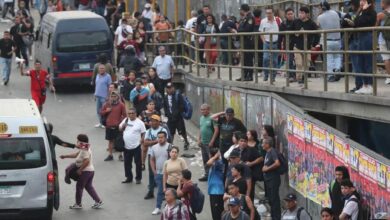The alarming figures of bullying in Latin America and the Caribbean
According to a UNESCO report, one in three students has suffered violence and bullying in the world

A recent report by UNESCO, entitled "School violence and bullying: Global status and trends, drivers and consequences", revealed that one in three students between 13 and 15 years old has been harassed. The report of the international organization is based on data from the Institute of Statistics of UNESCO, which account for a great problem that still persists in the world.
Leer en español: Las alarmantes cifras de bullying en América Latina y el Caribe
According to the director of UNESCO, Henrietta H. Fore, "education is fundamental to build peaceful societies and, nevertheless, for millions of children school is not a safe place. Students face daily multiple dangers, such as fights, the pressure to join gangs, harassment (in person and on the internet), violent discipline, sexual assault and armed violence".
In America, the figures of violence and bullying are still worrisome, although they are lower than in other regions of the world such as the Middle East, North Africa, and sub-Saharan Africa. In North America, for example, at least 31.7% of this population has suffered bullying.
In Central America, 22.8% have been harassed, 25.6% have been involved in physical fights, and 20.5% have been physically attacked. In South America, the numbers of harassment, fights, and attacks are higher, with 30.2%, 31.3%, and 25.6% respectively. In the Caribbean, there are also high figures with respect to Central America and Europe, with a total of 25%, 38.3%, and 33.8% for these three problems suggested by UNESCO.
Bullying, a problem thousands of teenagers still face
The same UNESCO report suggests that bullying is a problem that affects thousands of teenagers around the world. According to this, violence and bullying can be of four forms: physical, psychological, sexual violence, and bullying. In addition, this has a great negative impact on the mental health of boys and girls, as well as on their academic performance and their life aspirations.
Also read: How much Internet is too much for our children
It states that "violence and harassment in schools are mostly perpetrated by classmates but, in some cases, by teachers and other employees of the school". The most common types of bullying are physical and sexual, states the report. Cyberbullying is one of the less usual types of bullying, but it is constantly growing, which generates a lot of concern.
According to the same report, bullying has been halved in many parts of the world, but it is still a problem that affects boys and girls equally, although in different ways. While children usually suffer physical harassment, the type of bullying that girls suffer is psychological. Boys are also more likely to be involved in physical fights or be attacked than girls. Girls, on the other hand, suffer more cyberbullying.
"Sexual violence perpetrated by school staff and their peers affects both girls and boys", UNESCO says. Violence and harassment also vary according to the region in which the adolescents live. Bullying is also a problem suffered by this population due to its physical appearance, race, religion, sexuality, origin, and color.
What are the countries of Latin America and the Caribbean doing against bullying?
In recent years, various programs and campaigns have been carried out in the region to raise awareness about this situation, as well as reduce violence and bullying, whether physical, psychological, sexual, or cybernetic. In Mexico, for example, there is the program School Peace Mission launched by Facebook and Yeltic in August of this year, and "implemented by Fundación en Movimiento".
According to its website, it seeks to "serve more than 15,000 children and adolescents in 40 public schools." The initiative seeks to teach key socio-emotional skills to students in order to obtain a positive experience in school, prevent risk behaviors and promote a better school coexistence ". How? Through virtual reality.
In 2017, KiVa came to Argentina, a program against bullying created in Finland. According to its web page, this "is based above all on the change of attitudes and actions of the spectators so that they support the victim. Strategies addressed to all students in the program KiVa include lessons in which diverse topics related to bullying are addressed through discussions and variety of activities".
Also read: Home-based education: Discover strategies for parents and children
This program has also been implemented in other Latin American countries, such as Mexico, Colombia, and Peru. For its part, Aulas para la Paz is a program of the Inter-American Commission on Human Rights (CIDH), which has already been implemented in Uruguay, Chile, and Colombia, and which now wants to take Mexico.
According to Milenio, the goal is "to prevent violence in schools in the country and to generate a healthy coexistence among children who attend preschool, primary, and secondary". Speaking of Colombia, in the coffee country programs and campaigns against bullying have also been created for the prevention and accompaniment in case a teenager is a victim of bullying.
One of these campaigns is "Remove Bullying’s grade" that was launched in June of this year. According to El Universal, this is "an initiative that through the contest that bears the same name seeks that the citizens of Cartagena awaken and become aware of the problem that bullying represents".
LatinAmerican Post | Diana Rojas Leal
Translated from “Las alarmantes cifras de bullying en América Latina y el Caribe”
Listen this article





